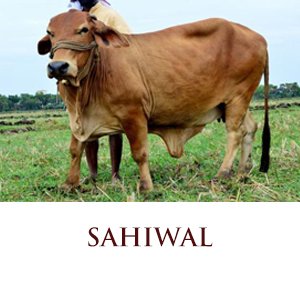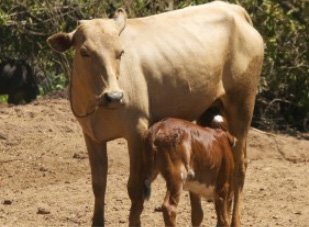Sahiwal - Desi Milch Breed

Sahiwal is best ‘desi’ milch breed though it is also used for dual-purposes. It is also known as “Lambi Bar”, “Lola”, “Montgomery”, “Multani” and “Teli”. This breed originated from the Sahiwal District of Pakistan in the Punjab region, along the India-Pakistan border. It is mostly found in the Rohtak, Karnal, Hissar, Gurgaon district of Haryana, the Union Territory of Delhi, and in West Uttar Pradesh. Its breeding tract is the Ferozpur and Amritsar districts of Punjab, and also the Sri Ganganagar district of Rajasthan.
Good herds of pure cattles are available around Fazilka and Abohar towns of Ferozepur district in Punjab. The Sahiwal cattle are tick-resistant as their skins keep quivering naturally. These are also parasite-resistant, heat-tolerant and drought-resistant.
It is most popular amongst the farmers. However, over the years, the number of pure-bred Sahiwal cattle has been dwindling. Consequently, the Punjab Government has formed the “Sahiwal Cattle Society” with the sole motto of propagating this native breed. Under the ‘Rashtriya Gokul Mission’ incentives are being given for rearing this endangered breed. A large herd of Sahiwal cows is maintained by the National Dairy Research Institute, Karnal in Haryana. Also, there are some Gaushalas that have been maintaining the Sahiwal cattle in Punjab and Rajasthan.
Characteristics:
- It has broad and small head, with long and narrow faces.
- It’s color ranges from reddish brown to predominant red, with varying amounts of white on neck and underline.
- In the males, the color darkens towards the extremities.
- The horns are short and almost horizontal in the cows while the bullocks have long horns that curve upwards and inwards.
- The ears are long, drooping and set behind, in level with the eyes.
- The legs are long, sturdy and heavily built with well-shaped hoofs.
- The barrel is long and compact and the tail is thin and short.
- The body is heavily built and symmetrical.
- The dewlap is heavy and the hump is large.
- Average weight of males is about 522 kg and that of females is 340 kg. Males having body weight of more than 1000 kg have also been documented.
- Average height of males is 136 cms. and that of females is 120 cms
- The cows have well developed udders. They have the ability to sire small, fast-growing calves.
- The milk yield is about 1500-2200 litres per lactation with fat content of 4.5 % and average lactation length is 235 days.
- The average age at first calving of 45 months, service period is 155 days and dry period is 205 days.
- The average calving interval is about 440 days while the gestation period is around 285 days
It’s adaptability is well documented in several ecological zones of Africa where they have been crossed with other exotic breeds. On account of its distinguished characteristics, this breed is exported to a wide range of countries and regions like the Caribbean, Africa and other Asian countries.
Over the years, the number of pure-bred Sahiwal cattle has been dwindling. The Punjab Government has formed the “Sahiwal Cattle Society” to propagate this native breed of Punjab. The society is firm and steady in respect of its motto of propagating this Cattle Breed.
Amongst all milch breeds, the Sahiwal cow is found to produce the largest quantity of milk. Also, its milk contains more fat content in comparison with the other imported cow breeds.
The main reason for its popularity is that it is comparatively more efficient in terms of milk production and giving birth to young ones.
The males are generally docile and lethargic, and are useful for slow work. They are known for their good temperament and their hardiness under unfavorable climatic conditions.
Help Us Now

Donate to Surabhivana Gaushala to save and protect Indian Cow Breeds.
All donations are exempt under Section 80G of the Income Tax Act, 1961. All donation receipts shall be mailed to the address given by the donor or may be collected in person, at request.
Click the below button to donate through credit cards/debit cards or Net Banking via Razor Pay.
